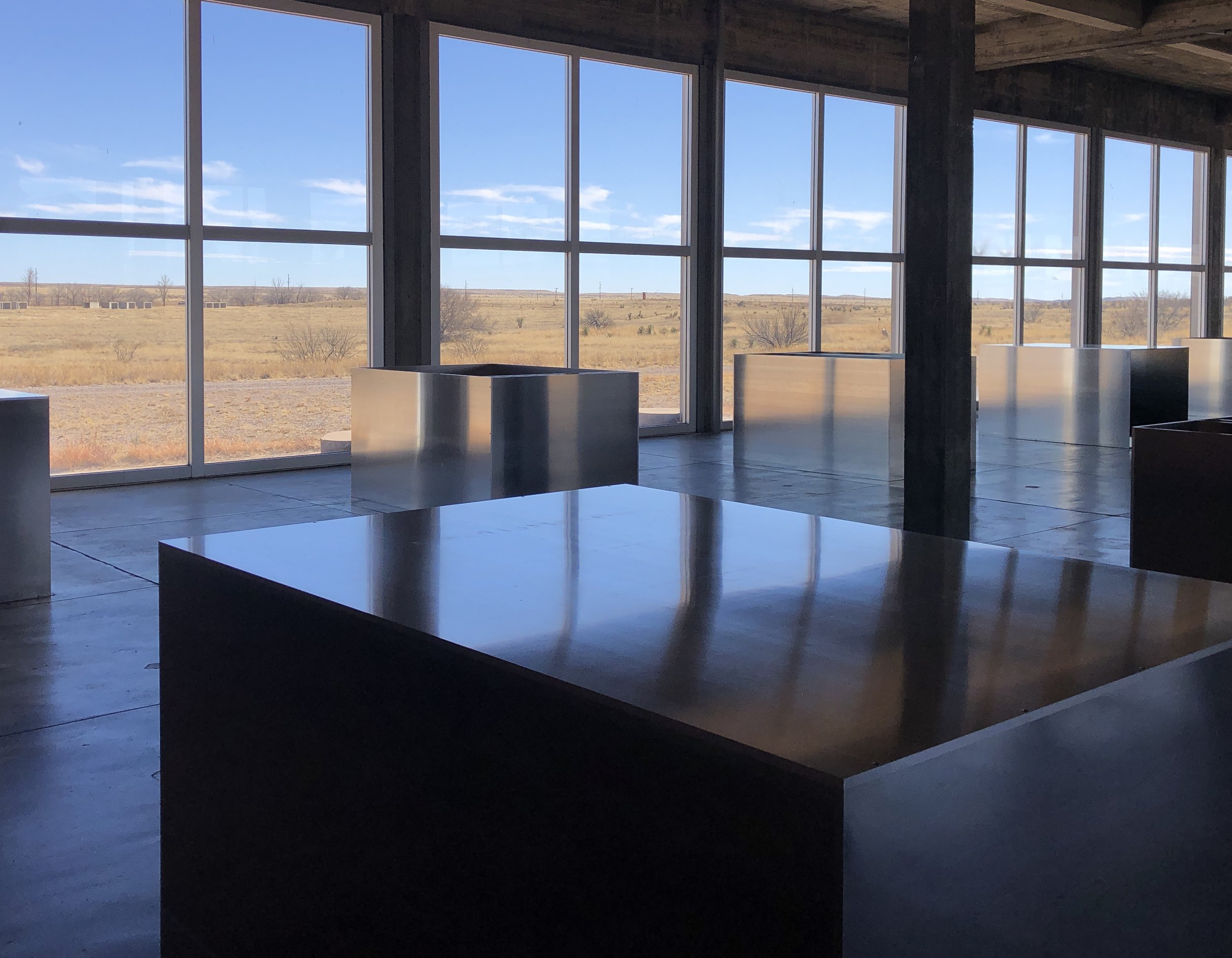Marfa
Originally Published March 9, 2022
Texas is a set of extremes and contradictions, Marfa being one of them. In the middle of nowhere, it is a thriving art community and a smug, tourist attraction. When you arrive you are given no clues. Like SoHo in the 1970's, you just have to know where to go. We stood on a corner chatting with two other lost souls, older women with Italian sunglasses, sharp lipstick and smart looking coats. "We're from New York.”
Everything worth seeing in Marfa is out of town. There are works by several important mid-century artists, as well as the work of several contemporary artists, and we had come particularly to see the works of Donald Judd. He had made Marfa a place to visit after moving here from SoHo in 1971, buying 16 decaying buildings, an entire decommissioned Army base, and three ranches spread across 40,000 acres.
There are two major "pieces" by Judd at Marfa. The first is "15 Untitled Works in Concrete," large rectangular boxes, all identical in overall dimensions, but with alternate enclosures and in various groupings. It is difficult to convey the impact of these works when seen in their desert surroundings. It's not just the size. It's that the work mediates the relationship between you, the earth and the sky, and with shifting light, darkness, gravity and weightlessness, challenges every reliable sense of consciousness.
Judd studied philosophy at Columbia University before becoming an artist, and was interested in Heidegger and Husserl, phenomenology and the study of conscious experience from the first-person point of view, and ontology and the concepts of existence, being, becoming, and reality.
Nowhere is this more apparent than in the "100 Untitled Works in Milled Aluminum" residing in the two artillery buildings abandoned at Fort Russell. Judd replaced the flanking doors with full height windows so that the pieces, each exactingly fabricated, are engaged in the reflection of light from outside, from the polished concrete floor, as well as from surrounding pieces. They are ephemeral, at times reflective, at times transparent, at times devoid of all light with rectangular slots of utter nothingness. You sense you could put your hand through them, and yet there they stand, solid, silent, inert. Just as with the work of say, Mark Rothko, the elemental, experiential markers provoke an unidentifiable and deep emotional response.
We left town for the day, too exhausted to look at anything else. The following day, while travelling to our next venue, we passed the Prada store, a simulacrum in the middle of the desert, twenty-three miles outside of Marfa, just outside the town of Valentine. Everything about Marfa is elsewhere.



